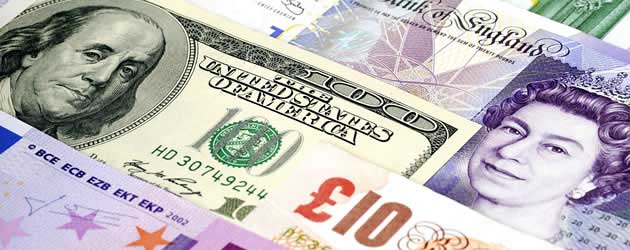
Euro
At the start of the week the Euro advanced against the US Dollar due to an increase in demand for riskier assets. The gains recovered some of the losses the currency suffered as a result of the ongoing political uncertainty in Italy. On Wednesday it held firm against the majority of its peers due to the improved appetite for riskier assets. Signs of a strengthening U.S. economy, continued support from the Federal Reserve, and plans for record Chinese government spending to sustain growth in China gave investors fresh confidence to take risk.
Midweek the Euro recovered from a three-month low against the US Dollar ahead of the European Central Bank’s policy meeting. The single currency also benefited from an increase in Portugal’s credit rating. The credit ratings agency, Standard and Poor’s raised the country’s rating from ‘negative’ to ‘stable’.
At the end of the week it strengthened against its peers after European Central Bank President Mario Draghi wrong footed investors by being surprisingly optimistic over the state of the Eurozone. Draghi played down the threat of contagion to other Euro nations from the political stalemate in Italy and was upbeat over the outlook for the region. The ECB also opted to not cut interest rates.
US Dollar
At the start of the week the ‘Greenback’ weakened against the Euro due to an increase in risk appetite. The Dollar’s weakness, which often reflects investors’ willingness to take on more risk, came against the backdrop of widespread gains for Asian equities.
The ‘Greenback’ came close to its highest-level in six-and-a-half months against a basket of currencies due to solid job data fuelling hopes that the US labour market is making a sustained recovery, which is one of the key conditions needed for the Federal Reserve to end its huge stimulus programme. Private-employers created 198,000 in February. On Friday it went on to strengthen to its strongest level since August 2009 against the Japanese Yen and rose against the majority of its peers.
Pound Sterling
This week the Pound dropped to a two-and-a-half year low against the US Dollar and weakened against the Euro as investors awaited the outcome of the Bank of England’s policy meeting. Sterling was also weighed down by reports that Chancellor George Osborne is considering granting the Central Bank more time to bring inflation back down to its 2% target.
The currency’s declines are expected to continue for the near future.
Australian Dollar
On Monday the ‘Aussie’ fell to an eight-week low due to heavy falls on the local and Chinese share markets. The currency then strengthened against most of its major counterparts due to the nation’s Central Bank choosing to maintain interest rates at 3%. The Australian currency rebounded from an eight-month low after Bank governor Glenn Stevens confirmed that the rate would remain unchanged. The decision came as a result of better-than expected retail sales data.
By the end of the week the ‘Aussie’ hit a 28-year high against Sterling and climbed against the Japanese Yen reaching a four-and-a-half year high. The currency hit 68.5 pence, its highest level since 1985. Against the US Dollar the ‘Aussie’ weakened after the latest trade data out of China showed that the world’s second largest nation lessened its demand for iron ore, Australia biggest export.
New Zealand Dollar
The ‘Kiwi’ spent most of the week shadowing its Australian counterpart as it strengthened after the Reserve Bank of Australia maintained rates at 3%. It followed its ‘Aussie’ relation upwards after the bigger Oceanic nation posted solid economic growth figures. The currency was also boosted by a 10% increase in New Zealand’s biggest export of dairy goods. Local dairy prices could continue to rise after the New Zealand government extended its drought-zone to cover most of New Zealand’s North Island. The arid conditions prompted dairy companies to lower their forecast milk collection for the season, spurring demand.
Midweek, growing concerns about the impact of the drought impacting the north island weighed upon the currency. Official drought zones were extended and now include five regions in New Zealand’s North Island. Profits from sheep and beef farms are expected to halve this season as the drought weighs on farm revenues.
On Friday it weakened against the US Dollar following the release of data showing that China’s trade surplus narrowed in February. China’s imports fell a sharper-than-expected 15.2% in February from a year earlier, compared with a 28.8% rise in January. Economists had predicted a 10% decline. Concerns over the impact of an ongoing drought in New Zealand’s north island have also weighed on the currency.
Canadian Dollar
The ‘Loonie’ began the week hovering just above an eight-month low against its US relation. The decline was caused by concerns over Europe and data showing that the Canadian economy has stagnated. The currency has fallen for a fourth-straight week as the economy posted growth of just 0.6%, its weakest rise since 2011.
As the week progressed the ‘Loonie’ continued its weak performance as Canada’s poor trade outlook and weaker housing market caused investors and speculators to look elsewhere. The Canadian Dollar was also weighed down by a worse-than-expected Ivey Purchasing Manager Index. The PMI expanded at a slower rate than expected in February falling to 51.1, down from the 58.9 reading recorded in January. A figure above 50 indicates expansion, below indicates contraction.
On Friday the currency began to reverse its fortunes by strengthening against the US Dollar after the nations latest trade figures showed that Canada’s trade deficit narrowed in January. Exports rose 2.1 per cent to $39.1 billion while imports decreased 1.9 per cent to $39.3 billion. The currency also benefitted from trade out of the USA that showed that the world’s biggest economy increased its imports of Canadian oil.

Comments are closed.